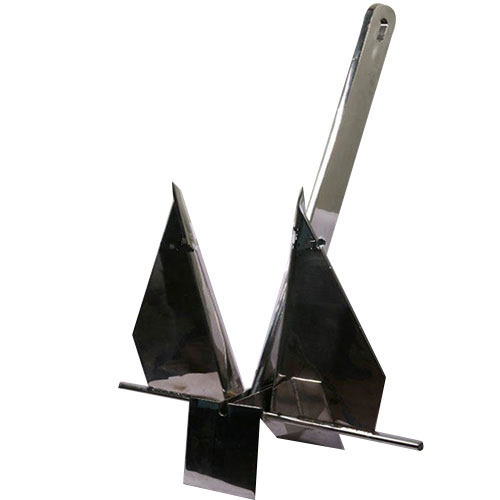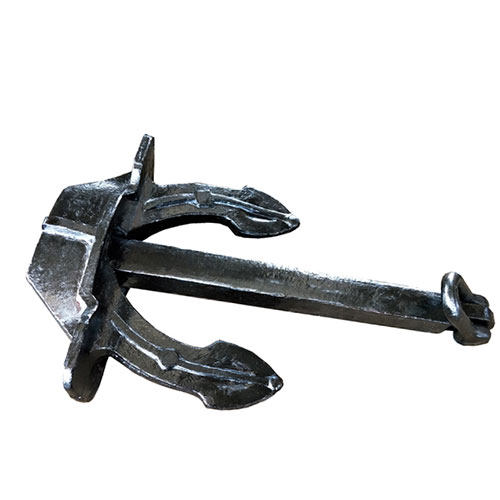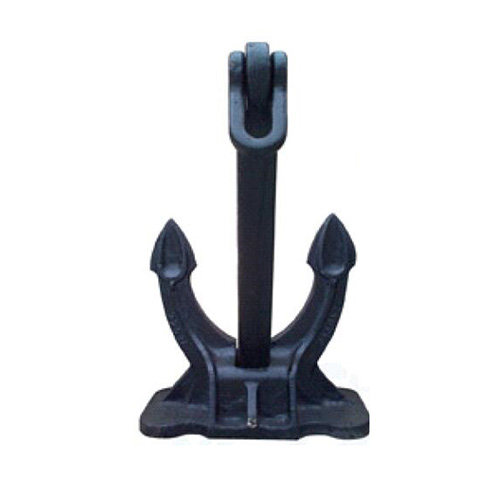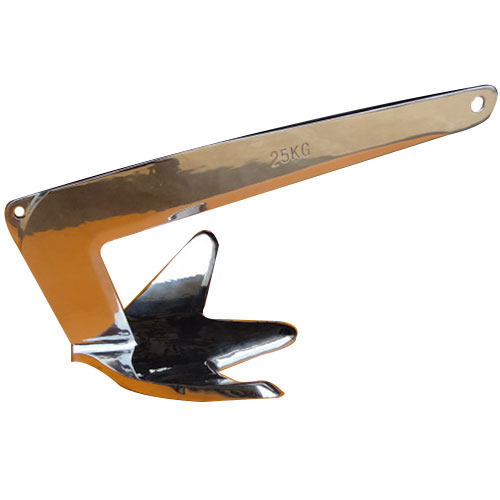Marine anchors can act as drogues (positive drag mechanism) for ships and other such vessels during storms. They provide a restoring drag that keeps the vessel stable and steady and prevents slamming of the bow or flooding through green water loading during unsteady conditions.
Danforth Anchor
The Danforth is a lightweight, cheap and easily storable design that uses two triangular blades or flukes attached to the shank to hook or dig into the ocean bed. The gap between the flukes allows for the Danforth anchor to grip onto debris and rocks instead of simply acting as a sail against the water currents. Also, the shank and flukes are hinged, so that the orientation of the flukes can be changed depending on the type of material on the seafloor.

Stockless Anchor
Stockless anchor is a normal type of stockless anchor with a small ball on a fluke. With the stockless design, it fits the anchor pocket perfectly. It is commonly used in commercial vessels and recreational craft. It is made high quality cast carbon steel and is a great mooring device for fishing boats due to the large holding power and easy storage.

Spek Anchor
Spek anchor is one type of the stockless anchor. It is the improved anchor with a lower point of gravity from the hall anchor, whose core of anchor head is located in the center of the pin centerline to the bottom. The structure of spek anchor is characterized that there is anchor crown plate and reinforcing ribs at the anchor crown. The anchor claw is easy to turn to the ground and then has a better stability. The smart design makes it a perfect fit for the anchor pocket.

Bruce Claw Anchor
This type of bruce claw anchor is commonly referred to as the claw because of its shape and design. It is used to hook into the rocks at the bottom of the ocean and then settle in. However, it does not work when the material at the bottom is loose sand, silt or mud. Also, weeds and other structures can entangle the claw of the anchor without providing any actual anchoring force. Instead, they tend to impede the recovery of the anchor when it is time for the vessel to move on.

Other types of equipment that are used in conjunction with an anchor to hold down a vessel or installation floating on the surface of the water include riggings (such as trip lines), anchor chains and ropes, stowage equipment, etc. Anchor chains and ropes are an important factor in determining the reliability of a given anchor since these provide the only connection between the structure and anchor. They must be able to withstand tremendous amounts of force both in tension and contraction. Similarly, trip lines must also be strong enough to apply force on the anchor to orient it in a particular direction.










Comments (0)